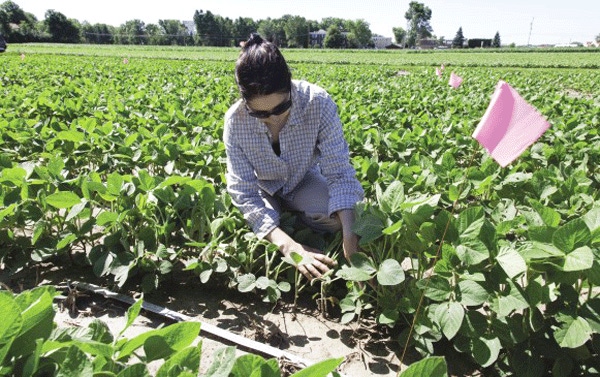
Narrow-rows play large role in soybean yield increases
• After three years, researchers condensed the study, which tested the yield impact of high-input systems against crops grown without any additional inputs, into three recommendations: use narrow-rows, manage input costs and mind the fundamentals.
November 15, 2012

From seed treatments to sunlight, the list of things farmers consider when planning for their crops grows every year.
With a sea of choices, it’s hard to figure out which products and practices have the greatest effect. So, the soy checkoff funded the “Maximum Yield Through Input” study with the hope of generating a set of recommendations that could be used by farmers from the Gulf Coast to the Canadian border and everywhere in between.
After three years, researchers condensed the study, which tested the yield impact of high-input systems against crops grown without any additional inputs, into three recommendations: use narrow-rows, manage input costs and mind the fundamentals.
Out of all of the variables studied, narrow-rows had the greatest positive impact on yield: According to researchers, planting in 30-inch rows limits profitability right from the start.
“The overall story that is told by this analysis indicates that return per acre can be maximized by planting in a 15-inch row spacing configuration without any additional inputs, assuming that row width is a no-cost option,” says Wade Kent, Ph.D. candidate, a University of Minnesota researcher.
Crops planted in narrow-rows can benefit from inputs, but adding too many inputs could hurt farmers’ economic returns. Good management rather than one single product helps farmers increase their profit potential.
“Products individually look like small investments with good potential for return,” says Kent.
“However, all those inputs cost something, and the costs added together can be greater than initially anticipated — as much as an additional $50-60 per acre. This scenario, if overlooked, can cause a negative or limited return per acre compared to using sound agronomic practices.”
Researchers also emphasized that no one input or practice will increase yield if farmers’ neglect the basics.
“It’s kind of a cliché: growers are looking for a silver bullet,” says Kurt Thelen, investigator and professor of plant and soil science, Louisiana State. “But it’s really about the fundamentals — doing a good job with the basics: your fertilizer; your pest control for diseases, insects and weeds; and being timely with your planting.”
Farmers can determine what impacts their particular farm the most with a study of their own.
“Try it for yourself — do a little of your own research,” says Jeremy Ross, investigator and assistant professor, University of Arkansas. “Put out some variety strips. If you think some fungicide at R3 or R5 is helping, put out a few untreated strips.”
You May Also Like



